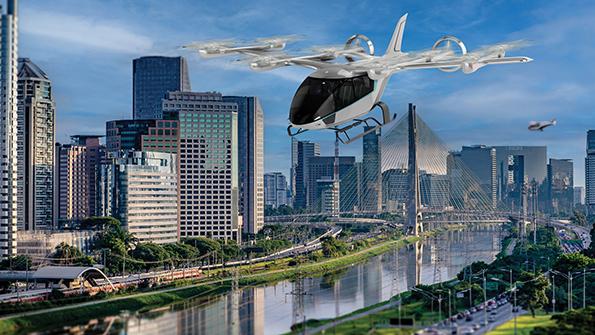
Eve has letters of intent for up to 2,770 eVTOL vehicles.

New aircraft today are typically designed with maintenance requirements in mind. Is this true with Eve’s eVTOL?
From the beginning of the design, we’ve thought about how it is going to be maintained for the lowest operating cost possible. Embraer programs have shown us that it’s very important to have this maintenance mindset from the beginning. That’s why we have aftermarket people working with the engineers as we talk about access, maintenance intervals and the size of the aircraft.
How will the maintenance plan look?
We are not there yet. There’s a process that we follow. We establish a group of maintenance experts and start with simple maintenance procedure guidelines. And then we share these with our main suppliers because it’s important from the beginning that the suppliers also have this maintenance mindset. It’s kind of a working group that will create maintenance plans and intervals in parallel with the aircraft’s development. We don’t say that these aircraft should have maintenance in X hours. We start with understanding the systems and then trying to match the components’ and systems’ maintenance with the structure of the aircraft. That’s an ongoing process.
How long will this process take?
Our goal is to enter into service in 2026, so a couple of years before, we will have a good view of the maintenance of the aircraft and the maintenance plan for the different major systems and structures. So, 2024 or 2025.
Will Eve perform the maintenance, or will you have an authorized service network?
Embraer, which has an established network that we can leverage, has been helping us develop this maintenance mindset, the maintenance planning and training. When we understand where operations will start, we can look at Embraer’s footprint there and decide the business model for support.
Do you know who will provide the maintenance training, and what will be the qualifications and certification requirements?
We are having roundtables with the industry, other OEMs and the regulatory authorities to understand the training for mechanics and pilots. Right now everybody is fixed on the pilots. But we will need a lot of mechanics, too. This is going to be a simple aircraft, so hopefully we won’t need too many hours to certify a mechanic. There’s a long way to go before we decide on the mechanic license requirements.
Engines usually consume about 40% of aircraft maintenance costs. Given that the eVTOL will be electric--powered, will electric systems dominate maintenance costs?
For eVTOLs, the energy systems—the batteries—will be the major part of the maintenance or operational cost. As soon as we have selected our suppliers, we can start to refine maintenance operations costs.
When will you select suppliers?
I’m not sure. We haven’t picked any suppliers yet.
What will be your approach with the batteries? Would you consider swapping them?
No, the batteries will stay on the aircraft until they have to be changed. Swapping batteries is dangerous—it’s a high-voltage vehicle.
